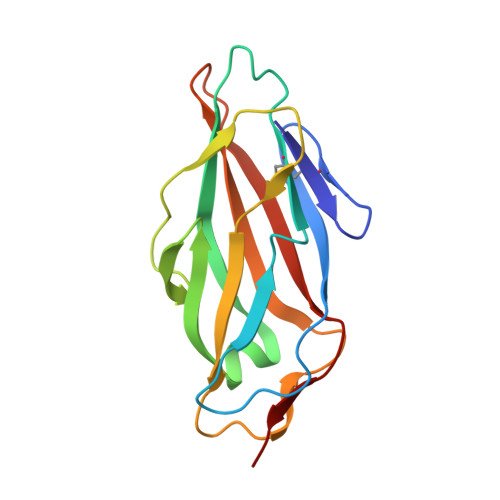Antivirulence Isoquinolone Mannosides: Optimization of the Biaryl Aglycone for FimH Lectin Binding Affinity and Efficacy in the Treatment of Chronic UTI.
Jarvis, C., Han, Z., Kalas, V., Klein, R., Pinkner, J.S., Ford, B., Binkley, J., Cusumano, C.K., Cusumano, Z., Mydock-McGrane, L., Hultgren, S.J., Janetka, J.W.(2016) ChemMedChem 11: 367-373
- PubMed: 26812660
- DOI: https://doi.org/10.1002/cmdc.201600006
- Primary Citation of Related Structures:
5F2F - PubMed Abstract:
Uropathogenic E. coli (UPEC) employ the mannose-binding adhesin FimH to colonize the bladder epithelium during urinary tract infection (UTI). Previously reported FimH antagonists exhibit good potency and efficacy, but low bioavailability and a short half-life in vivo. In a rational design strategy, we obtained an X-ray structure of lead mannosides and then designed mannosides with improved drug-like properties. We show that cyclizing the carboxamide onto the biphenyl B-ring aglycone of biphenyl mannosides into a fused heterocyclic ring, generates new biaryl mannosides such as isoquinolone 22 (2-methyl-4-(1-oxo-1,2-dihydroisoquinolin-7-yl)phenyl α-d-mannopyranoside) with enhanced potency and in vivo efficacy resulting from increased oral bioavailability. N-Substitution of the isoquinolone aglycone with various functionalities produced a new potent subseries of FimH antagonists. All analogues of the subseries have higher FimH binding affinity than unsubstituted lead 22, as determined by thermal shift differential scanning fluorimetry assay. Mannosides with pyridyl substitution on the isoquinolone group inhibit bacteria-mediated hemagglutination and prevent biofilm formation by UPEC with single-digit nanomolar potency, which is unprecedented for any FimH antagonists or any other antivirulence compounds reported to date.
- Washington University School of Medicine, Department of Biochemistry and Molecular Biophysics, 660 S. Euclid Ave., St. Louis, MO, 63110, USA.
Organizational Affiliation:


















